studio status report: 2023-06
month 06 of 2023 was about almost finishing the Songhay.Player.ProgressiveAudio project again
An examination of the play/pause control and the playlist—introduced to the “Songhay.Player.ProgressiveAudio release 6.0.0” project in month 05—led to the very real need to address how the requestAnimationFrame [📖 docs] method should interoperate with Bolero.
This ‘very real need’ led to the following projects:
The completion of the projects above will allow the Songhay.Player.ProgressiveAudio project to continue to conclusion.
Obsidian graph for month 06
Quite coherently, Bolero (at the upper left below) hovers prominently in the Obsidian graph for month 06:
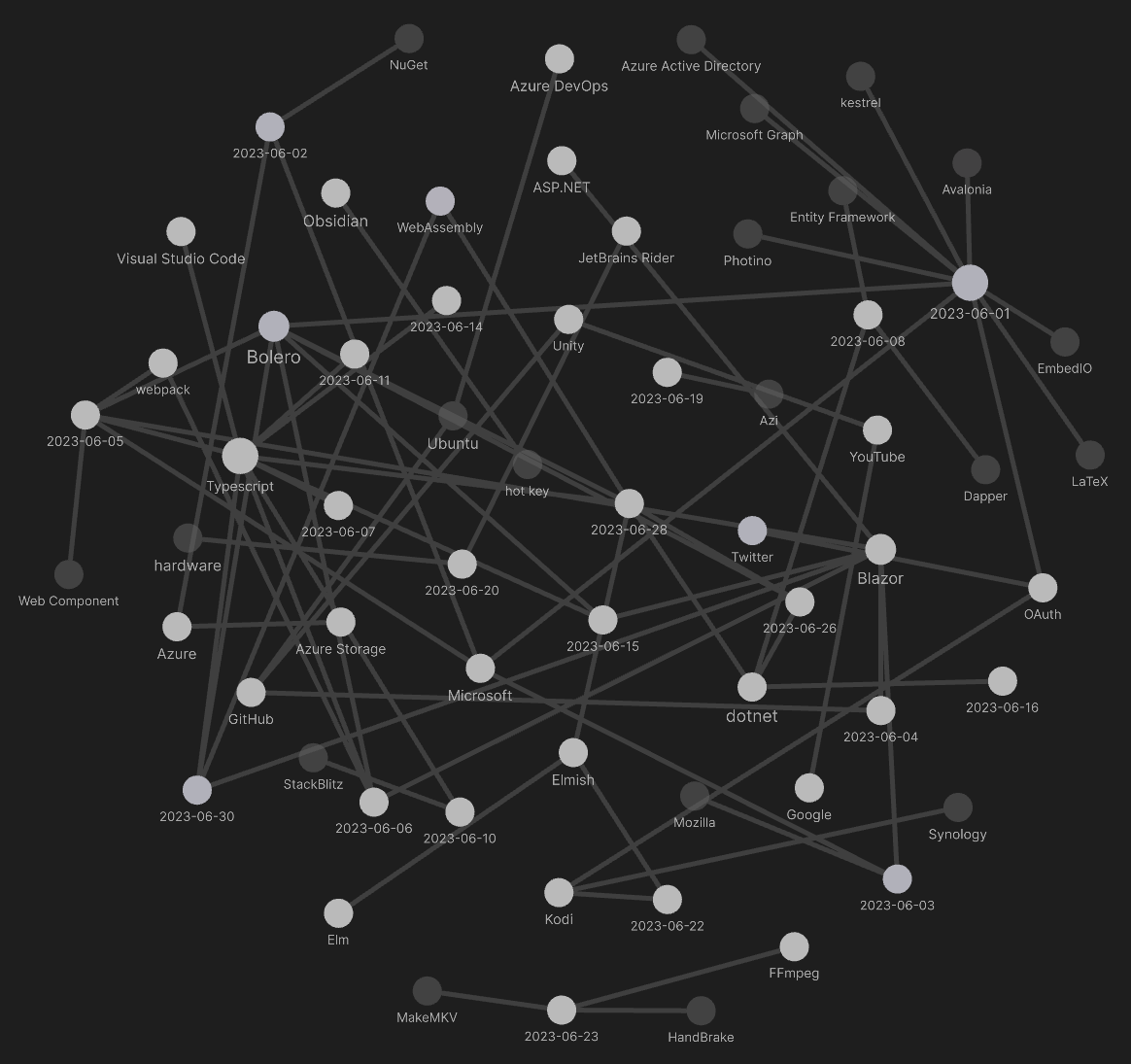
What follows are selections under this graph:
[[Bolero]] demands more functionality from [[Songhay Core (Typescript)]]
A new [[Songhay Core (Typescript)]] project is open to address the need for stuff like:
AnimationFrameOptionsAnimationFrameUtility.throttleCallbackDomUtility.runWhenWindowContentLoaded(f: () => void)
[[Songhay Modules Bolero (F♯)]]: issue #12
The main intent behind issue #12 is to explicitly import the TypeScript members referenced in JsRuntimeUtility. For example a line like this:
jsRuntime.InvokeAsync<string>($"{rx}.{CssUtility}.getComputedStylePropertyValue", elementRef, propertyName).AsTask()
…can be changed to this:
jsRuntime.InvokeAsync<string>($"{rx}.{BoleroUtility}.getComputedStylePropertyValue", elementRef, propertyName).AsTask()
…where BoleroUtility will be defined and saved in the Solution so it (and its associated, minified JavaScript) can be referenced in documentation explicitly. Even this slight improvement is still terrible!
The tree-shaking 🍂 features of [[webpack]] are supposed to make the associated, minified JavaScript files smaller.
a new [[Typescript]] convention for the Studio
Issue #12 for [[Songhay Modules Bolero (F♯)]] is almost done! Completion of this issue means that:
[!important] This Studio will formally recognize that [[Blazor]] has at least a 4.9 KB dependency on JavaScript in large part because of the need here for CSS animations.
Today the [[Typescript]] pipeline was installed:
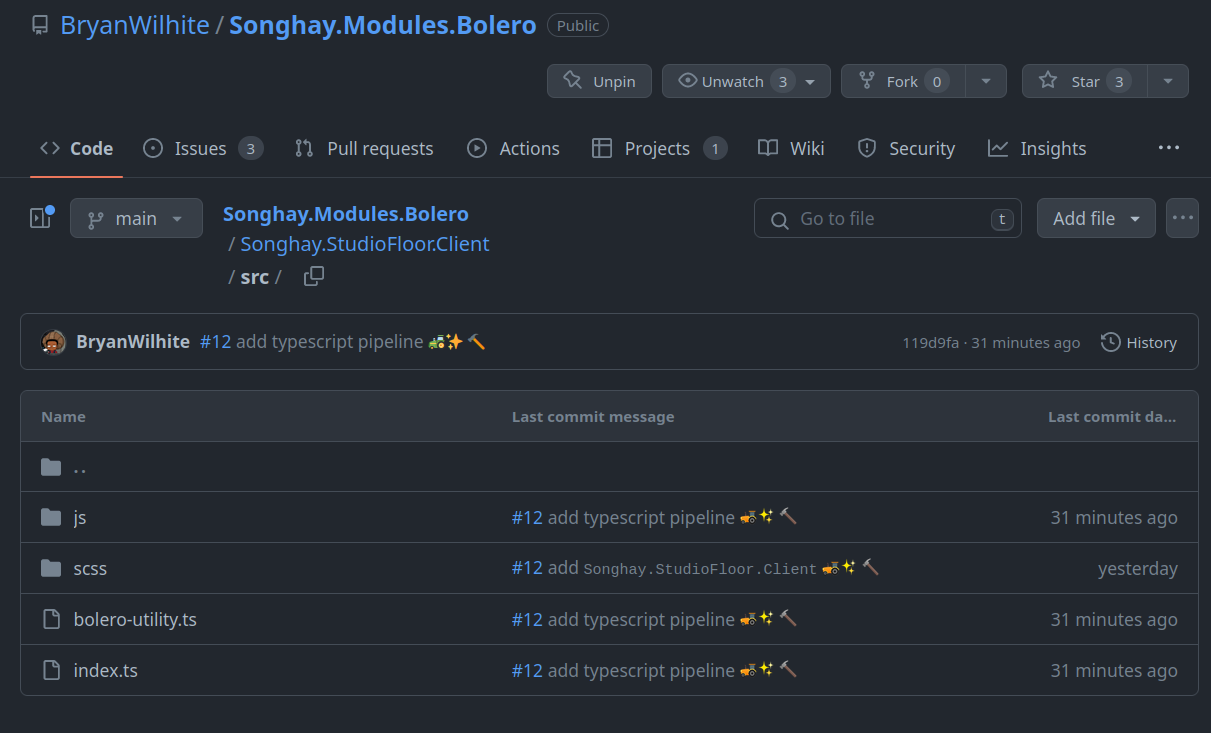
The tree-shaking experiment is successful… but the bandwidth savings is (to me) small. The entire [[Songhay Core (Typescript)]] optimized distribution is about 11 KB:
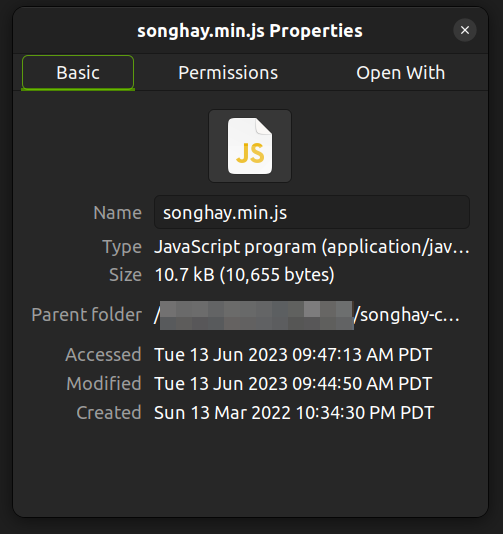
Tree-shaking it down to the types used by [[Songhay Modules Bolero (F♯)]] cuts the size in half:
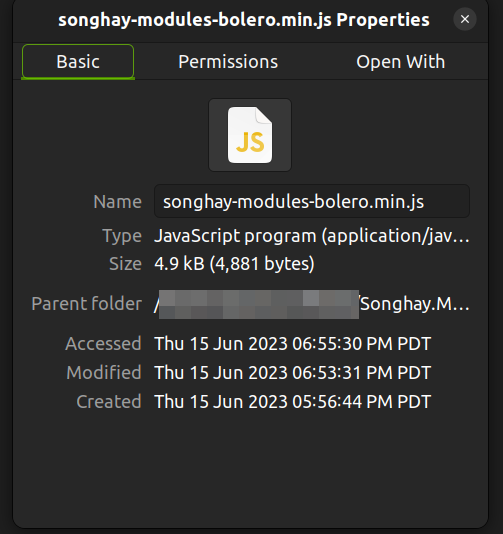
But half of 11 KB is small from something already small. Ideally, all of this work will be an emotional boost for those happy few that will actually care about the [[Bolero]] story in this Studio 😐
Never-the-smaller, this move establishes a convention based on [[Typescript]] that will allow my [[Bolero]] work depend on horrible JavaScript in a more professional manner ✅
[[Bolero]] and JSInvokable continued…
Continuing on from [[2023-06-26#Bolero and JSInvokable|before]]…
The [[Typescript]] stack for the [[Songhay Studio Floor]] of [[Songhay Modules Bolero (F♯)]] has a new addition: the npm [package](## @types/blazor__javascript-interop) @types/blazor__javascript-interop which adds hinting for the DotNet “namespace”:
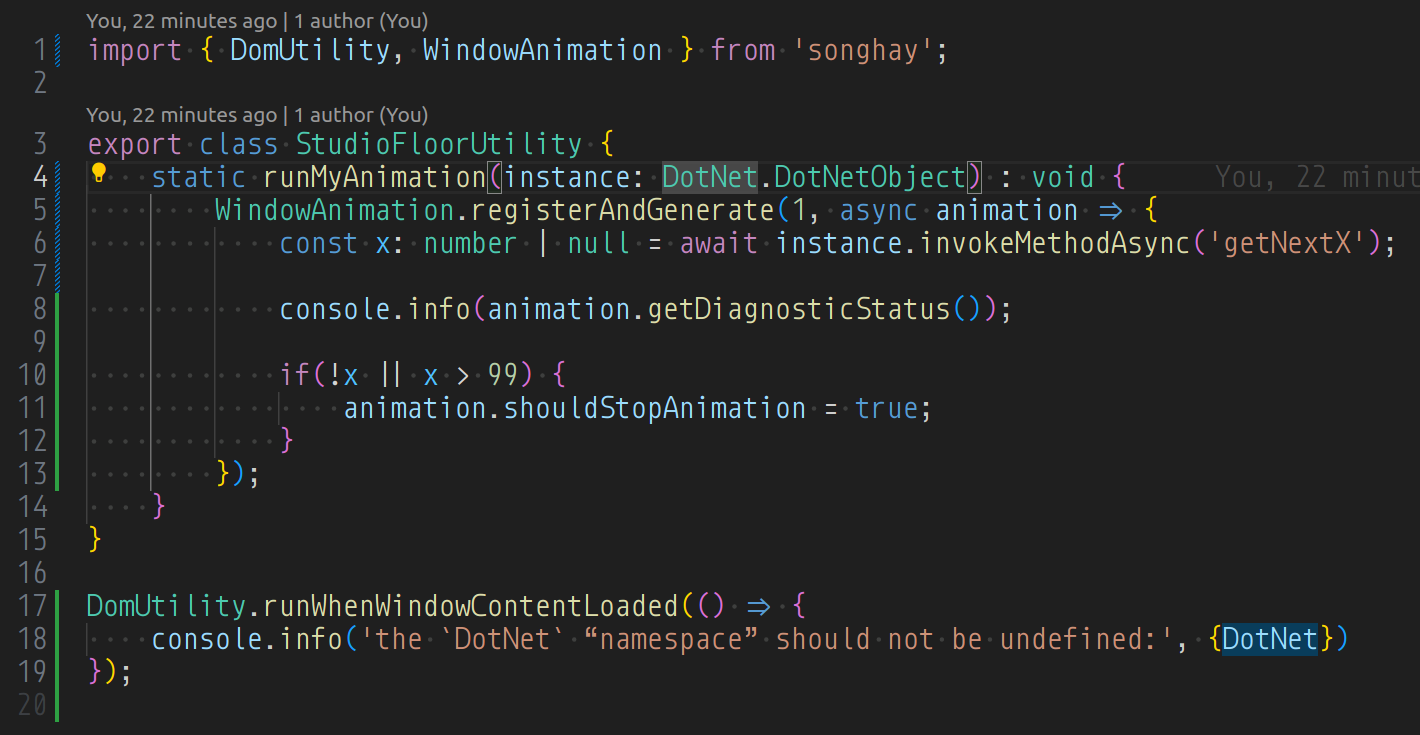
“Using JavaScript Interop in Blazor” by Chris Sainty finally shows me DotNet in action while the official docs made me think DotNet was not a ‘real’ object.
Following the Sainty article, I have a preference for the “instance method” invocation as shown above with the instance variable passed into StudioFloorUtility.runMyAnimation. This instance instance will call getNextX which is a [[dotnet|.NET]] member of the [[Elmish]] component displaying the button that will call runMyAnimation:

eComp.componentRef (from line 145 above) contains the instance needed to callback to the [[WebAssembly]] code. A call to StudioFloorUtility.runMyAnimation starts this process:
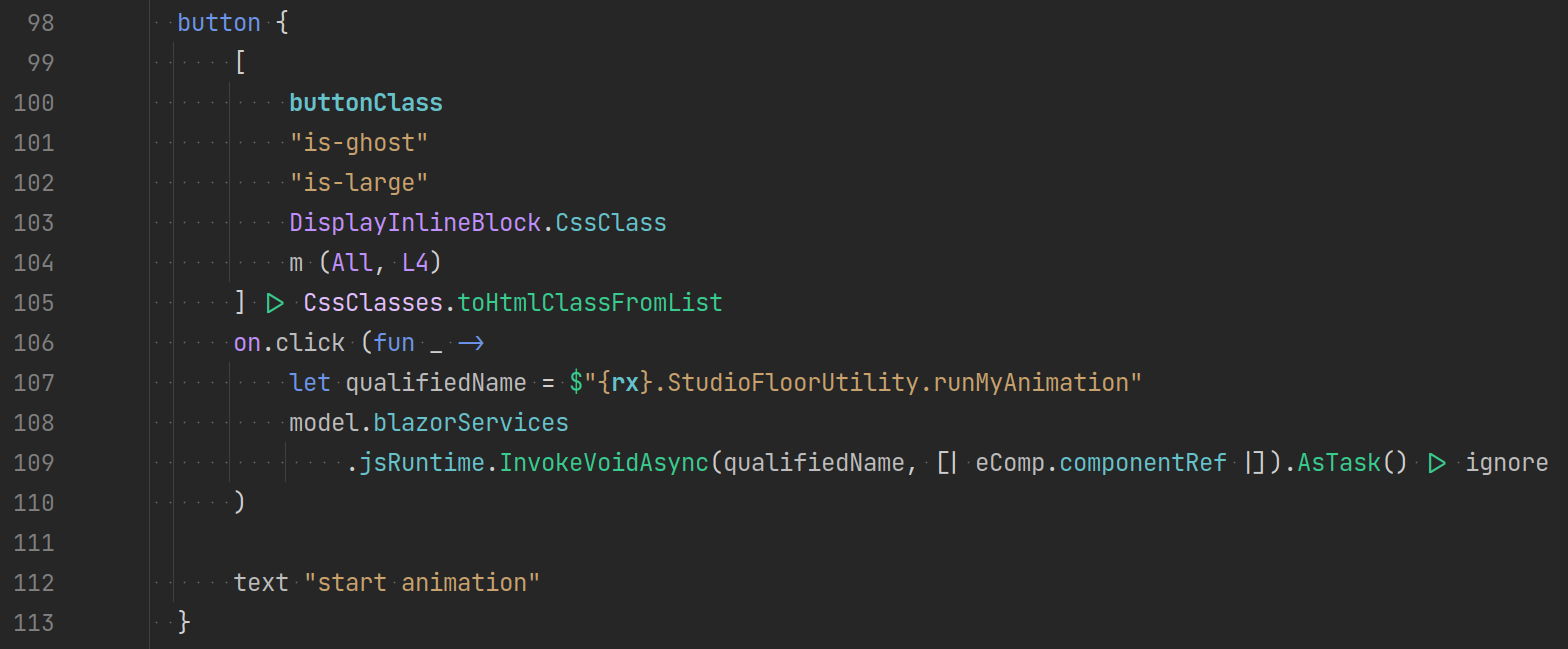
The process is:
- call the JavaScript that will start a browser-window-level animation callback loop
- the callback will call a [[dotnet|.NET]] method that returns data to the loop
- the loop will use that data to continue or stop the loop
sketching out development projects
The current, unfinished public projects on GitHub:
- finish the “
Songhay.Player.ProgressiveAudiorelease 6.0.0” project - start the “
SonghayCore📦✨ release 6.0.5” project
The proposed project items:
- add kinté space presentations support to
Songhay.Player.YouTube🔨 🚜✨ - replace the Angular app in
http://kintespace.com/player.htmlwith a Bolero app 🚜🔥 - generate Publication indices from LiteDB for
Songhay.Publications.KinteSpace - generate a new repo with proposed name,
Songhay.Modules.Bolero.Index✨🚧 and add a GitHub Project - switch Studio from Material Design to Bulma 💄 ➡️ 💄✨